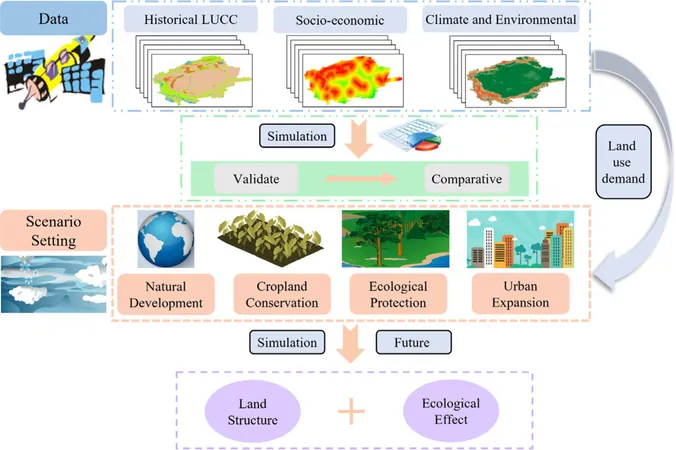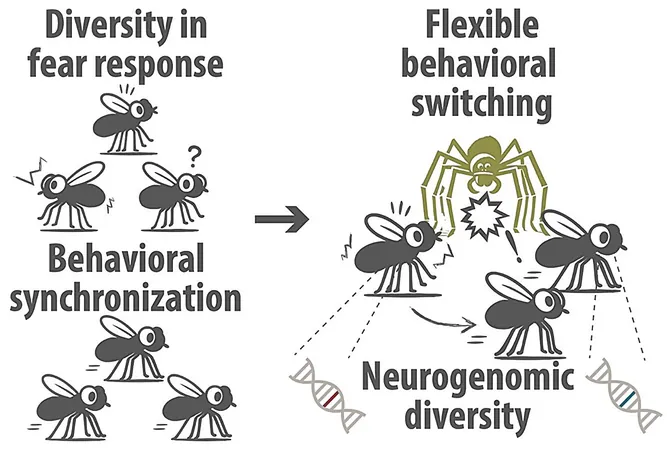
Revolutionary Study Unveils Ecological Transformation in China's Tarim River Basin
2025-05-22
Author: Jacques
Decades of Change Uncovered
A groundbreaking study spearheaded by Prof. Chen Yaning from the Xinjiang Institute of Ecology and Geography has unveiled how decades of land-use changes have dramatically transformed the ecological landscape of the Tarim River Basin—China's largest inland river system. This pivotal research, recently published in *Geography and Sustainability*, highlights the intricate relationship between human activity and environmental health.
Dramatic Shifts in Land Use
Utilizing advanced multi-source remote sensing and a wealth of meteorological and socioeconomic data, the research team meticulously analyzed land-use trends over the past 30 years. They employed the innovative Patch-generating Land-Use Simulation (PLUS) model to forecast future land patterns and ecological outcomes.
The findings reveal astonishing changes from 1992 to 2020: cropland expanded by approximately 18,851 square kilometers—an impressive 56.13% increase! Meanwhile, grasslands and woodlands also thrived, growing by 10,235 and 1,015 square kilometers, respectively. However, the most remarkable statistic is the reduction of barren land, shrinking by about 20,597 square kilometers, leading to a notable rise in the ecological quality index from 0.1196 to 0.1248, particularly in the upper and middle reaches of the basin.
Toward a Sustainable Future
Building on these insights, the researchers simulated four potential land development scenarios: Natural Development, Cropland Conservation, Ecological Protection, and Urban Expansion. Of particular interest is the Ecological Protection scenario, which predicts that by 2050, grasslands, forests, and water bodies could increase exponentially—by 20,375, 2,635, and 586 square kilometers, respectively. Such changes promise significant ecological enhancements and a better environment for future generations.
Across all scenarios, the transformation of barren land into lush grasslands and vibrant woodlands is poised to be the catalyst for ecological improvement, boosting ecosystem services like water conservation, soil retention, and biodiversity.
A Blueprint for Sustainability
This pivotal study not only sheds light on the profound impacts of land-use change but also provides an essential scientific foundation for promoting sustainable development and effective ecological conservation strategies in the Tarim River Basin. As China continues to wrestle with environmental challenges, these findings present a compelling call to action for policymakers and conservationists alike.









 Brasil (PT)
Brasil (PT)
 Canada (EN)
Canada (EN)
 Chile (ES)
Chile (ES)
 Česko (CS)
Česko (CS)
 대한민국 (KO)
대한민국 (KO)
 España (ES)
España (ES)
 France (FR)
France (FR)
 Hong Kong (EN)
Hong Kong (EN)
 Italia (IT)
Italia (IT)
 日本 (JA)
日本 (JA)
 Magyarország (HU)
Magyarország (HU)
 Norge (NO)
Norge (NO)
 Polska (PL)
Polska (PL)
 Schweiz (DE)
Schweiz (DE)
 Singapore (EN)
Singapore (EN)
 Sverige (SV)
Sverige (SV)
 Suomi (FI)
Suomi (FI)
 Türkiye (TR)
Türkiye (TR)
 الإمارات العربية المتحدة (AR)
الإمارات العربية المتحدة (AR)